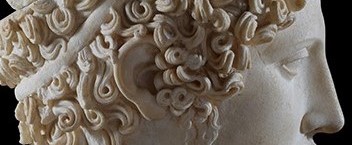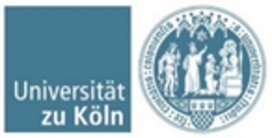Call for Papers

Hergestellt und aufgestellt. Produktionsdynamiken und Kontexte römischer Skulpturen im antiken Mittelmeerraum
Internationale Tagung vom 25.–27. Februar 2019 an der Universität Graz
Antike Skulpturen sind seit den Anfängen der archäologischen Wissenschaft ein zentraler Bestandteil der Forschung. Im Laufe der Zeit sind dabei unterschiedliche Fragestellungen in den Blick genommen worden. Aktuell stellt man verstärkt Fragen zur Herstellung, zur Verbreitung und zu den Kontexten griechischer und römischer Porträtplastik und Idealskulpturen. Viele Aspekte bedürfen aber noch einer eingehenderen Betrachtung. Auf welcher Grundlage erfolgt beispielsweise die Zuweisung von bestimmten Skulpturen an spezifische Werkstätten und/oder Bildhauer? Inwieweit spielen logistische und wirtschaftliche Faktoren eine Rolle? Wie einheitlich sind die Aufstellungsorte von Skulpturen in Städten einer Region? Vor allem interdisziplinär angelegte Untersuchungen zur römischen Skulptur versprechen eindrucksvolle Erkenntnisse zu diesen Fragen hervorzubringen.
Im Rahmen der Tagung möchten wir vor diesem Hintergrund verschiedene Aspekte diskutieren und dabei vor allem zwei Bereiche fokussieren: die mit der Herstellung von rundplastischen Skulpturen verbundenen produktionsdynamischen Prozesse und spezifische Kontextualisierungen dieser Monumente in unterschiedlichen Räumen. Wir versprechen uns von der gemeinsamen Betrachtung, dass auf diese Weise ein substanzielleres Bild von „Skulpturenlandschaften“ entsteht. Ein geographischer Schwerpunkt soll im östlichen Mittelmeerraum liegen, da gerade hier viele Orte der Skulpturenherstellung und -aufstellung bekannt sind und die Vielfalt des Skulpturenmaterials eine besonders erfolgversprechende Auswertung zu den hier verfolgten Fragestellungen erwarten lässt.
Vorträge (30 Minuten) zu folgenden Rahmenthemen sind erwünscht:
1. Produktionsdynamische Prozesse
Die Materialebene:
- Steinbrüche
- Auswahlkriterien und Organisation, Kosten
- Verfügbarkeit von Material
- Transportwege von Steinmaterial
Die Herstellerebene:
- Formanalysen und stilistische sowie handwerkliche Merkmale (beispielsweise Werkzeugspuren) als Hilfsmittel, um Produktionsstätten zu ermitteln
- Epigraphische Evidenz zu Bildhauern und Produktionsstätten
- Befunde von Werkstätten zur Skulpturenherstellung
Die Organisation von Werkstätten
Die Vertriebsebene:
- Transportwege und Handelsnetze
- Produktionspalette (lokale Ebene und Export)
- Auftraggeber/Zielpublikum
2. Aufstellungskontexte
- Aufstellungsorte im urbanen und extraurbanen Raum (Städte, Heiligtümer)
- Anlässe für Skulpturenaufstellung, historische Kontexte, Inschriften, Münzen
- Verhältnis von Porträtplastik und Idealskulptur (Gottheiten, Heroen, Athleten) in spezifischen Räumen
- Verhältnis von Bronzeskulpturen und Steinskulpturen in spezifischen Räumen
- Städtekonkurrenz (Quantität und Qualität der statuarischen Ausstattung, Prestigegewinn durch die Herstellung/Aufstellung von Skulpturen etc.)
Die Einreichung eines Abstracts (ca. 300 Wörter) wird erbeten bis zum 31.10.2018 an:
sculpture-conference2019(at)uni-graz.at
Wir bemühen uns, eine finanzielle Förderung von Reise- und Übernachtungskosten der Referentinnen und Referenten zu ermöglichen.
Konferenzsprachen: Deutsch, Englisch
Veranstaltungsort: Meerscheinschlössl, Mozartgasse 3, 8010 Graz
Veranstalter: Universität Graz, Universität zu Köln
Veranstaltungsorganisation: Alice Landskron, Thoralf Schröder
Konferenzgebühr: 50 € (25 € für Studierende) beinhaltet Verpflegung in Kaffeepausen, Mittagsbuffets, einen Abendempfang am Institut für Archäologie, Gastgeschenk für Vortragende/ Poster
Kontakt: sculpture-conference2019(at)uni-graz.at
Homepage: https://sculpture-conference2019.uni-graz.at
Produced and Displayed. Dynamics of Production and Contexts of Roman Sculptures in the Ancient Mediterranean Region
International Congress from 25–27 February 2019 at the University of Graz
Since the beginnings of archaeological science, ancient sculptures have formed a central component of research. Over the course of time, a variety of issues in this area have been addressed. Currently, questions are increasingly posed regarding production, dissemination and contexts of Greek and Roman portrait sculptures and idealised sculptures. Many aspects, however, require a more in-depth treatment. For example, on what grounds were certain sculptures assigned to specific workshops and/or sculptors? To what extent did logistical and economic factors play a role? How unified are the sites of display of sculptures in the cities of a region? Above all, investigations which adopt an interdisciplinary approach to Roman sculpture promise to yield impressive results regarding these questions.
Against this background, within the framework of the congress, we would like to discuss a variety of aspects, and focus above all on two areas: firstly, the processes related to dynamics of production associated with the creation of sculpture in-the-round, and secondly, the specific contextualisation of these monuments in differing spaces. We are committed to the common consideration that, in this manner, a more substantial picture of the "sculptural landscape" will emerge. A geographical focal point should be located in the eastern Mediterranean region, since precisely here many sites of sculptural production and erection are known, and the variety of sculptural material allows the expectation of a particularly promising appraisal of the issues under consideration.
Papers (30 Minutes) on the following themes are appreciated:
1. Processes of Dynamics of Production
The material level:
- Quarries - criteria for selection and organisation, costs
- Availability of material
- Methods of transport of stone material
The production level:
- Analysis of forms, and stylistic as well as craftsmanship characteristics (for example, traces of tools) as an aid in determining production sites
- Epigraphical evidence for sculptors and production sites
- Evidence of workshops for sculptural production
- The organisation of workshops
The distribution level:
- Transport routes and trading networks
- Production range (local level and export)
- Commissioner/target audience
2. Context of Display
Sites of display in urban and extra-urban spaces (cities, sanctuaries)
- Occasions for sculptural display, historical contexts, inscriptions, coins
- Ratio and relationships of portrait sculpture and idealising sculpture (divinities, heroes, athletes) in specific spaces
- Ratio and relationships of bronze sculptures and stone sculptures in specific spaces
- Civic rivalry (quantity and quality of sculptural display, gaining prestige via the production/display of sculptures, etc.)
Submission of abstracts (ca. 300 words) is requested up until 31th October 2018 via: sculpture-conference2019(at)uni-graz.at
We endeavour to enable financial support for travel and accommodation expenses for the participants.
Conference languages: German, English
Congress Site: Meerscheinschlössl, Mozartgasse 3, 8010 Graz
Operators: University of Graz, University of Cologne
Event Organisation: Alice Landskron, Thoralf Schröder
Conference Fee: 50 € (25 € for students)
Contact: sculpture-conference2019(at)uni-graz.at
Homepage: https://sculpture-conference2019.uni-graz.at/
Kontakt
Internationale Tagung an der Universität Graz, Institut für Archäologie
25. - 27. Februar 2019
Tagungskomitee
PD Mag. Dr. Alice Landskron, Universität Graz
Jun.-Prof. Dr. Thoralf Schröder, Universität zu Köln
Veranstaltungsort
Meerscheinschlössl
Mozartgasse 3
8010 Graz
